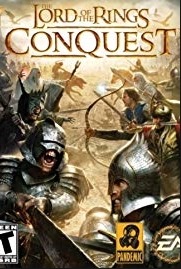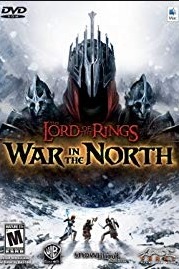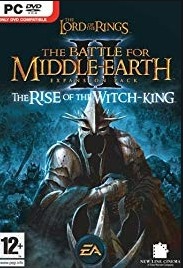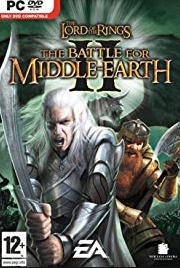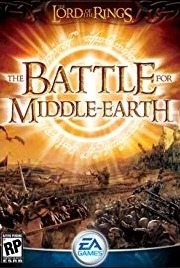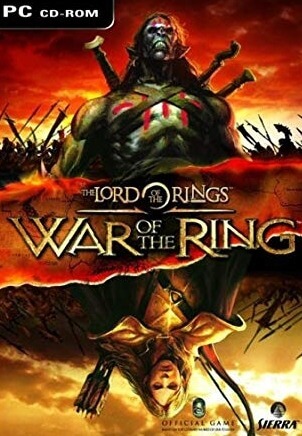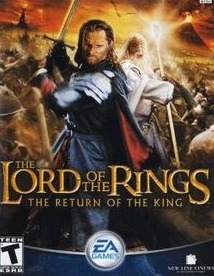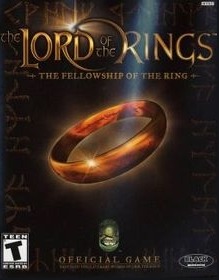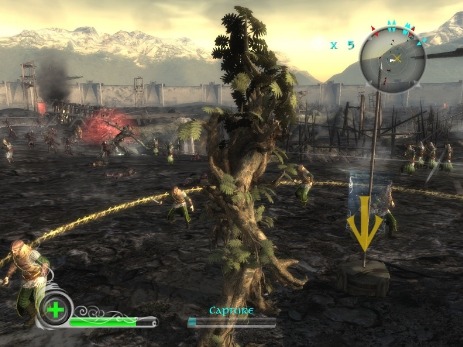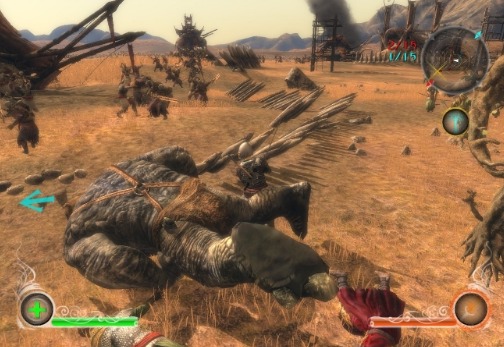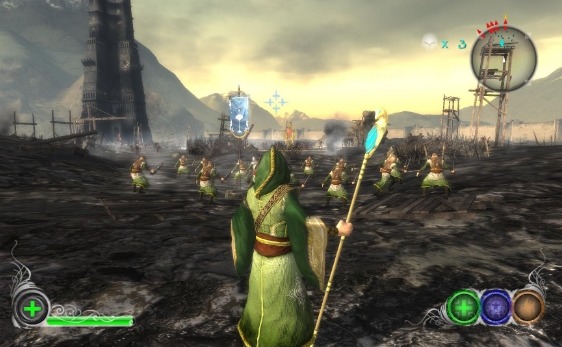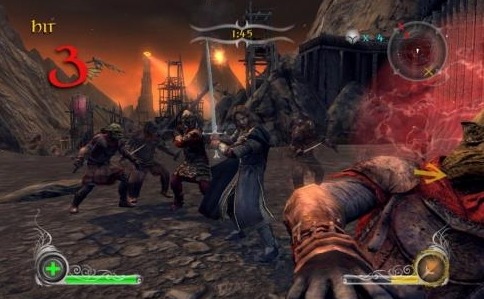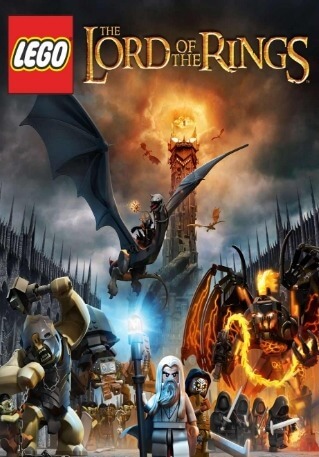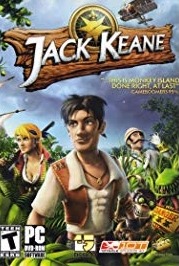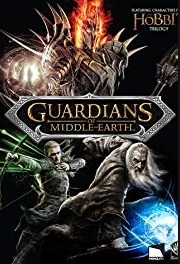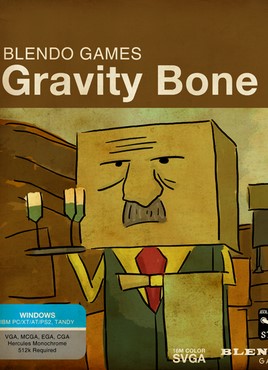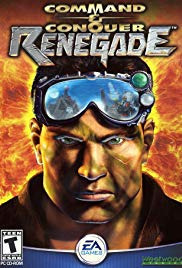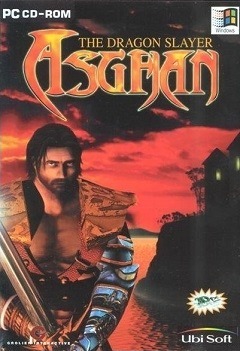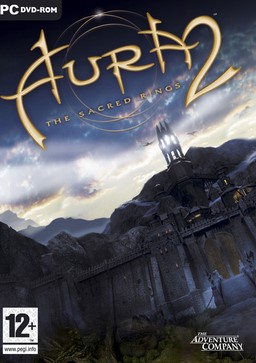The Lord of the Rings: Conquest is a 2009 action game developed by Pandemic Studios and published by Electronic Arts. It is derived from The Lord of the Rings film trilogy, and borrows many gameplay mechanics from Pandemic's Star Wars: Battlefront games. The game allows the player to play as both the forces of good and evil, but unlike The Lord of the Rings: The Battle for Middle-earth, the latter option is based around Sauron stopping the One Ring from being destroyed and using it to regain his lost power.
Pandemic was aided by Weta Digital in developing the game. They provided many of their digital models, including the fell beasts. Pandemic also used elements that were cut from the films, and have taken inspiration from J. R. R. Tolkien's original fantasy series, such as a level based loosely around Balin's conquest of Moria, in which Gimli attempts to retake the dwarven city from the orcs. Some inspiration was less direct: the armies of Rohan and Gondor decide not to attack Minas Morgul in the novel, but a level in the game is based on what might possibly have happened if they had. The game uses Howard Shore's score to the films as its soundtrack. The Lord of the Rings: Conquest received mixed reviews, with criticism focusing on its gameplay, graphics, balance issues, artificial intelligence, and multiplayer.
Gameplay
The player takes the role of a soldier of Rohan, Gondor, Rivendell, Harad, Mordor or Isengard, depending on the campaign or side the player chooses. The game is generally objective based, requiring the player to defeat a certain number of enemies, or hold a position until a timer runs out. If a soldier dies the game continues from the point of death and the death has no impact on the storyline or flow of the game. However a player is given a certain number of lives and if those are used up he/she must repeat the entire level.
In the War of the Ring campaign, containing eight levels, the player loosely follows the major battles of the films with some additions such as the Mines of Moria and Minas Morgul. In the Rise of Sauron campaign, the player controls the forces of Sauron in a reworking of the storyline set over seven levels of a film called The final war for Middle Earth.
In this story, the Dark Lord reclaims the ring when Frodo Baggins was corrupted by and failed to destroy the One Ring. The hobbit is then killed by the Witchking of Angmar, leading to Sauron subsequently conquering Middle Earth. Both campaigns are narrated by Hugo Weaving, who played Elrond in Peter Jackson's film trilogy.
The game uses a class-based character system, similar to the system found in Pandemic's previous game Star Wars: Battlefront. There are four playable classes. Warriors are a melee combat unit which focus on swordsmanship. Unlike the other classes, whose special attacks recharge over time, warriors can only gain energy by defeating enemies, which allows them to unleash more powerful attacks with a flaming sword, such as spinning to hit every adjacent enemy. They are the only class that can block or perform counterattacks with special moves. The warrior also has a throwing axe as a secondary, medium ranged weapon. Archers are better suited for long range combat and are equipped with a bow and arrow. Different types of arrows can be equipped: fire arrows, which can knock down enemies and deal explosive damage; poison arrows, which slow enemies down and do damage over time, and the ability to fire a volley of three normal arrows at multiple enemies at once. They also have a kick for use in close-quarters, which knocks back the enemy. They can also hit concealed Scouts with the multiple arrow skill. A headshot will allow the archer to kill most enemies in a single hit.
Scouts are masters in the art of moving unseen. The scout's primary weapons are two daggers, and he has the ability to become temporarily invisible and assassinate units instantly from behind with a sneak attack. As a secondary attack, he carries satchel bombs filled with blasting powder as a ranged attack. The scout can also block melee attacks. Finally, Mages serve as the magic class. A mage's primary attack is a bolt of lightning, which can be charged up for a more powerful attack that can also damage other enemies in close proximity to the target. He also wields a “firewall” attack, which creates an expanding circle of flames that will heavily damage if not kill enemies who are within the circle. For close range attacks, they have a shockwave attack, which knocks enemies back and allows the mage to finish them off with his staff. Mages can also heal allies. For defensive purposes, a mage can create a magical shield around himself to protect anyone inside from ranged attacks of any sort, provided the attacker is outside of the shield, which allows people to walk through. While the shield ability is active, the mage is unable to do anything else and is therefore highly vulnerable to melee attacks.
The player can occasionally gain the opportunity to play as a Troll or an Ent, which are also used by non-player characters and, while far stronger than any normal class, are vulnerable to instantaneous kills by Warriors and Scouts through the use of Quick Time Events. Any class can ride a mount: horses for the Men of the West and wargs and Oliphaunts for Sauron and Saruman’s forces. Mounts are useful for quickly traversing large areas, but are highly vulnerable and a single hit against one will result in the player being knocked off (with the exception of the oliphaunt, which has an enormous amount of health). The player wields a sword when mounted, regardless of their class, and is only allowed to use basic attacks. Mounts also have the power to trample enemies when riding at top speed. Depending on the game's settings during multiplayer matches, or during certain periods of the campaign, players will have the opportunity to control heroes, many of whom include the heroes and villains of Lord of the Rings. The heroes are usually based on the four primary class archetypes, controlling very similarly to their standard non-hero counterparts, but are also far more powerful, though not invincible.
In the Nintendo DS version, gameplay features are greatly reduced. The Scout class is unavailable and mounts are non-existent. In addition, the playing perspective is isometric and six maps were shipped with the game. All classes start out relatively weak, but fallen enemies will drop orbs that allow the player to power-up their current character's attack power and speed, resetting after the player respawns. After a level is over, a post-game statistics screen will appear to show the player's performance and to award them in-game achievements for their accomplishments (not allowing allies to die, for instance).
